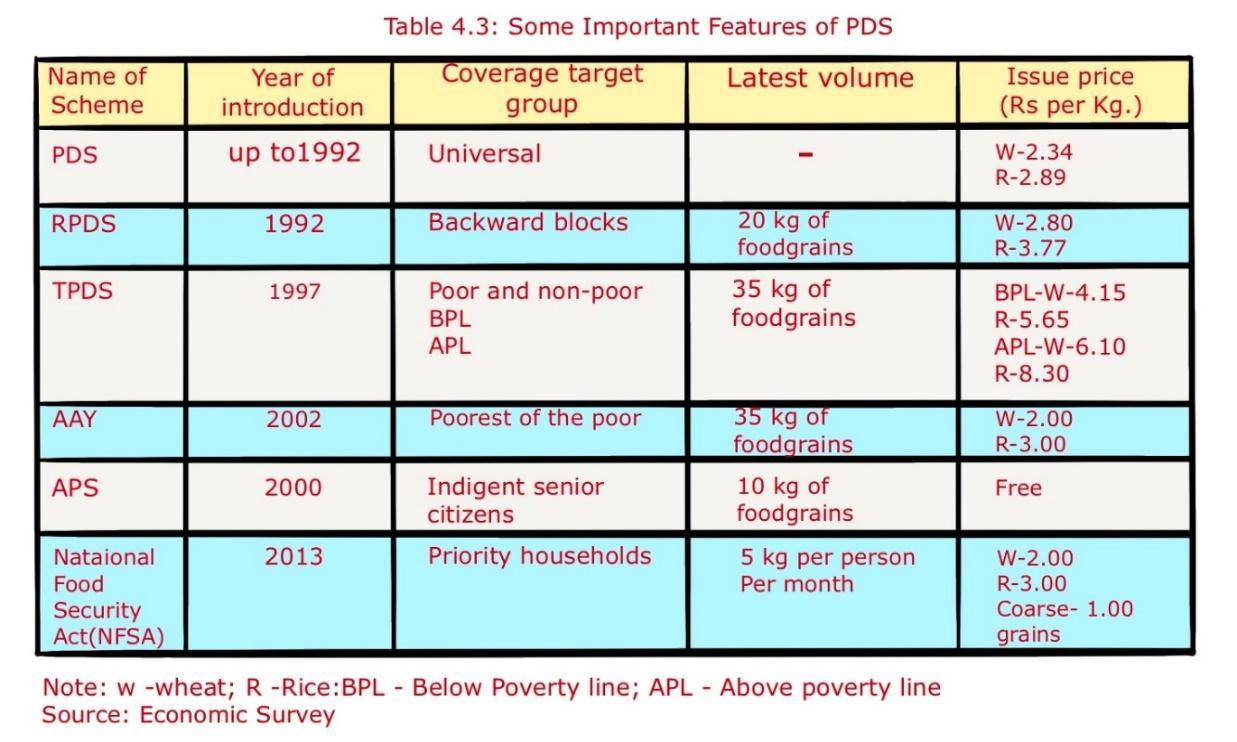Role of Cooperatives in Food Security:
The cooperatives are also playing an important role in food security in India, especially in the southern and western parts of the country. Various examples include:
- In Tamil Nadu, around 94 per cent of fair price shops are run by cooperatives
- In Delhi, Mother Dairy is making strides in the provision of milk and vegetables to the consumers at a controlled rate decided by the Government of Delhi
- Amul is another success story of cooperatives in milk and milk products from Gujarat
- In Maharashtra, the Academy of Development Science (ADS) has facilitated a network of NGOs for setting up grain banks in different regions
- ADS organises training and capacity building programmes on food security for NGOs
Public Distribution System:
- The food procured by the FCI is distributed through government-regulated ration shops among the poorer section of the society
- This is called the Public Distribution System (PDS)
- Ration shops (also known as Fair Price Shops) are now present in most localities, villages, towns and cities
- There are about 5.5 lakh ration shops all over the country
- Any family with a ration card can buy a stipulated amount of these items (e.g., 35 kg of grains, 5 litres of kerosene, 5 kg of sugar etc.) every month from the nearby ration shop
Current Status of the Public Distribution System:
PDS System has gone through various changes in the course of time, they are as follows:
- Further, in 2000, two special schemes were launched viz. Antyodaya Anna Yojana (AAY) and Annapurna Scheme (APS) with special target groups of ‘poorest of the poor’ and ‘indigent senior citizens’, respectively

Problems in the working of PDS system:
- FCI godowns are overflowing with grains, with some rotting away and some being eaten by rats
- High carrying costs, in addition to wastage and deterioration in grain quality due to high stock levels
- The procurement is concentrated in a few prosperous regions (Punjab, Haryana, Western Uttar Pradesh, Andhra Pradesh and to a lesser extent in West Bengal) and mainly of two crops— wheat and rice— increase in MSP has induced farmers, particularly in surplus states, to divert land from production of coarse grains, which is the staple food of the poor, to the production of rice and wheat
- Environmental degradation and fall in the water level due to intensive utilisation of water in the cultivation of rice
- PDS dealers are sometimes found resorting to malpractices like diverting the grains to the open market to get better margin, selling poor quality grains at ration shops, irregular opening of the shops and so on
- Now, with TPDS (Targeted Public Distribution System) because of three different prices, any family above the poverty line gets very little discount at the ration shop. The price for APL families is almost as high as the open market price, so there is little incentive for them to buy these items from the ration shop
 Profile
Profile Settings
Settings Refer your friends
Refer your friends Sign out
Sign out













